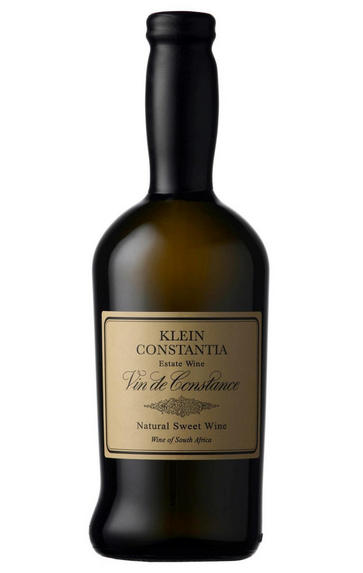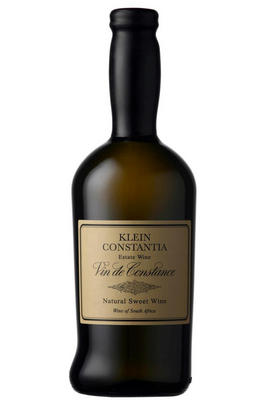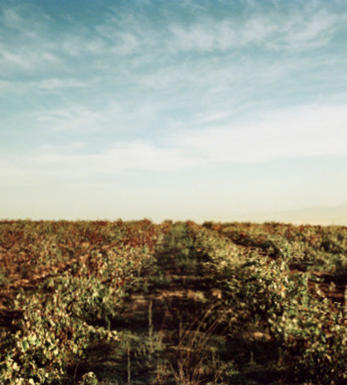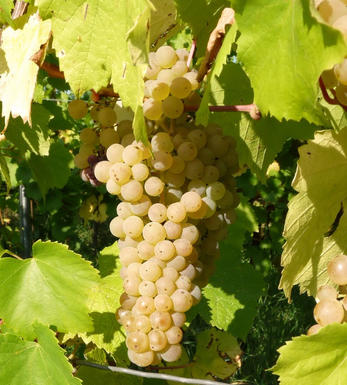
2009 Klein Constantia, Vin de Constance, Constantia, South Africa

Critics reviews
Neal Martin - 31/10/2014
About this WINE

Klein Constantia
Klein Constantia is a wine farm in Constantia, a ward in the suburbs of Cape Town, South Africa. It was once part of a larger estate called Constantia, which was founded in 1685. Following the death of founder Simon Van der Stel in 1712, that estate was sold at auction and divided into three distinct properties. Perhaps best known for the sweet wine Vin de Constance, Klein Constantia is among South Africa’s best-known producers.
The estate is owned by a number of businesspeople, including Zdeněk Bakala and Charles Harman, who acquired it in 2011. The following year, Klein Constantia merged with Stellenbosch’s Anwilka Estate. The latter’s Bordelais owners Hubert de Boüard (of Château Angélus) and Bruno Prats (formerly of Cos d’Estournel ) became shareholders as a result.
Head winemaker here is Matthew Day. The talented young South African worked internationally (in Bordeaux, Barossa Valley, and Napa Valley) before joining, initially as an assistant winemaker, in 2008. In addition to Vin de Constance, Matthew and his team craft a complete range that includes red, white, rosé, and even sparkling wines. He is particularly interested in Sauvignon Blanc, taking inspiration from some of the Loire Valley's top producers, including the late Didier Dagueneau. Vin de Constance is a naturally sweet wine from the Muscat de Frontignan grape.

Constantia
The historically important if tiny wine district of Constantia lies in Cape Town’s southern wards, and on the most southerly point of Africa, the Cape of Good Hope.
Constantia is most famous for its ancient dessert wine Vin de Constance (made from Muscat de Frontignan) as produced by Klein Constantia estate.
The cooling, south-easterly sea breezes make Constantia a natural site for Sauvignon Blanc, Semillon as well as Muscat.
The district is home to a mere 8 wine estates, including Klein Constantia, Groot Constantia, Buitervenwachting, Constantia Uitsig, Eagles' Nest, Steenberg, Constantia Glen

Muscat
Muscat refers to a family of grapes of which there are around 200 different branches. Muscat Blancs à Petits Grains is the most noble of the variety and makes the best and most distinctive wines. It is the only wine grape that produces wines that actually taste of grapes, and can produce a range of wines from pale, bone dry whites, through to golden yellow, rich, sweet wines.
In Alsace, two types of Muscat are grown - Muscat Blancs à Petits Grains and Muscat Ottonel. They are usually blended to produce wines that tend to be light and dry with a fruity, musky character and an intensely aromatic bouquet. Intensely sweet late harvest wines are also produced.
Muscat de Beaumes de Venise is one of the best Vin Doux Naturels in France. This is produced by adding grape spirit to the partly fermented must - the best producers, such as Domaine de Durban, produce deliciously sweet wines with rich grapey aromas balanced by fruity acidity.
In Australia Muscat à Petit Grains is used to produce the fortified Liqueur Muscats of Victoria (esp. Rutherglen). These are extraordinary wines - dark and treacly with a sensational perfume of orange, raisins and honey.


Buying options
Add to wishlist
Description
The nose is enticing with orange, marmalade and apricot aromas, freshly harvested honey. If this isn’t enough of an assault on the olfactory senses, then the palate is in for just as big a treat. The mouth feel has a lovely viscosity that layers the mid palate with tropical fruit, dried pineapple, spiced honey and yet the finely balanced acidity lifts this to a finely honed length and finish. Always a great sweet wine for the hedonists this is another great offering that is very drinkable in its youth or over the next 10 + years.
Stuart Rae, Private Account Manager
The Klein Constantia Vin De Constance is a legendary natural sweet wine, widely regarded as one of the world’s finest. During the 18th and 19th centuries Vin de Constance was the most famous wine from the Southern Hemisphere. This seductive and iconic sweet offering, made only 20km from Cape Town, seduced the Kings and Queens of Europe, featured in the novels of Charles Dickens and Jane Austen and continues to impress its loyal followers. In 1980 Klein Constantia was bought by Duggie Jooste who redeveloped the Estate.
Early records were studied and careful selection was made from vines which, in all likelihood, came from the original stock used in Constantia 300 years ago. In 1986 the first vintage of the renaissance was reintroduced to the public and packaged in a similar style 500ml bottle to its forebears. Made from Muscat de Frontignan, the 2009 was aged in a combination of French oak, French Acacia oak and Hungarian oak barrels for 4 years, of which 60% were new barrels. The harvest began in late January and was completed only in late April.
The extended picking period allowed the estate to harvest up to 25 different batches that make up the many components in the final blend. Each bunch is hand selected and only the ripest and best bunches are chosen. There is no racking or movement of the wine during the 4 years of ageing until the final
wine at a glance
Delivery and quality guarantee